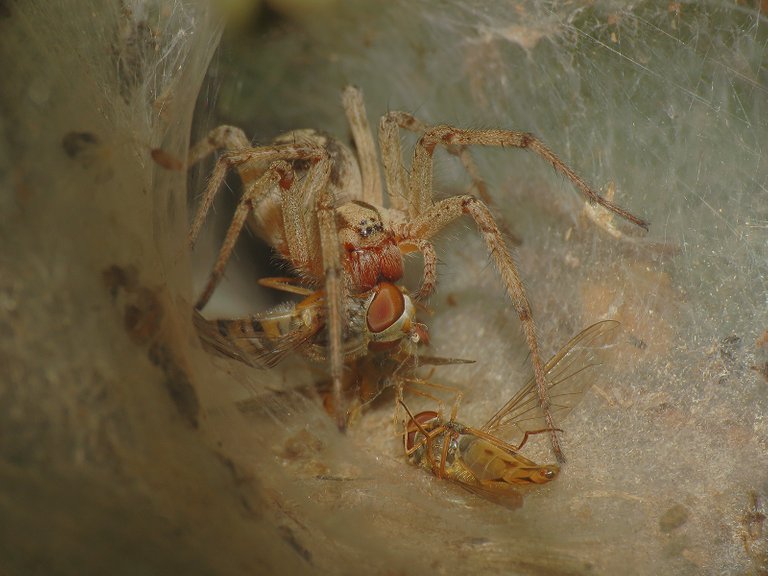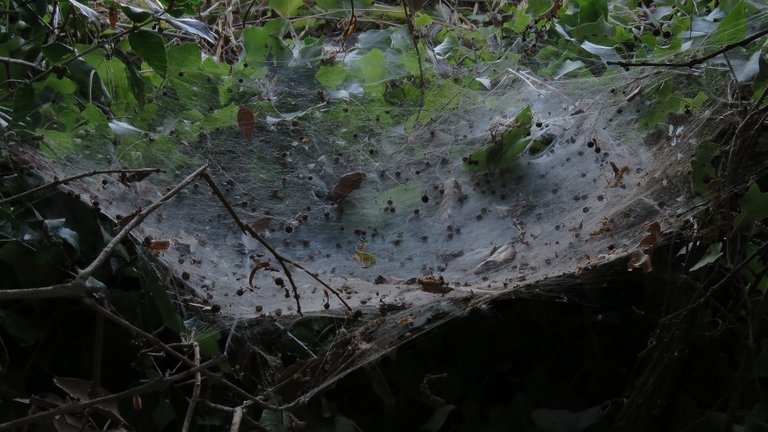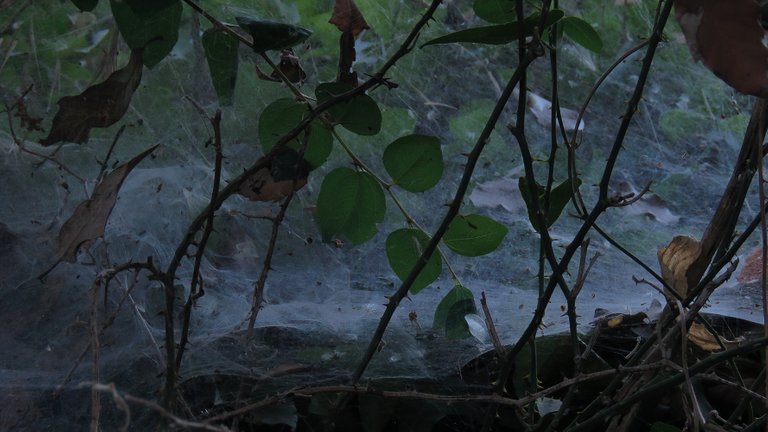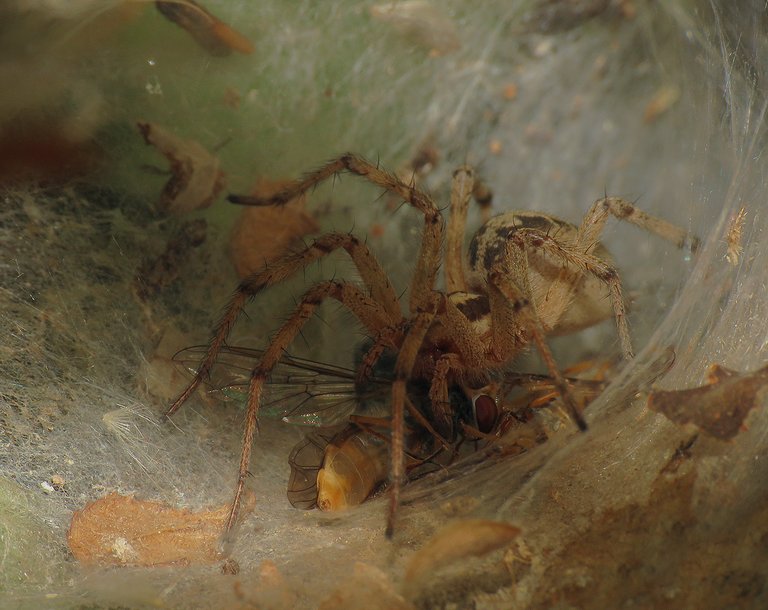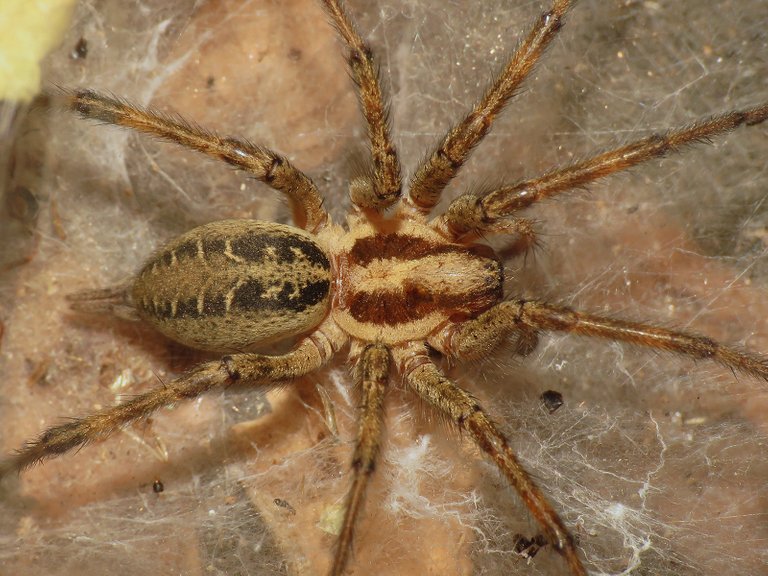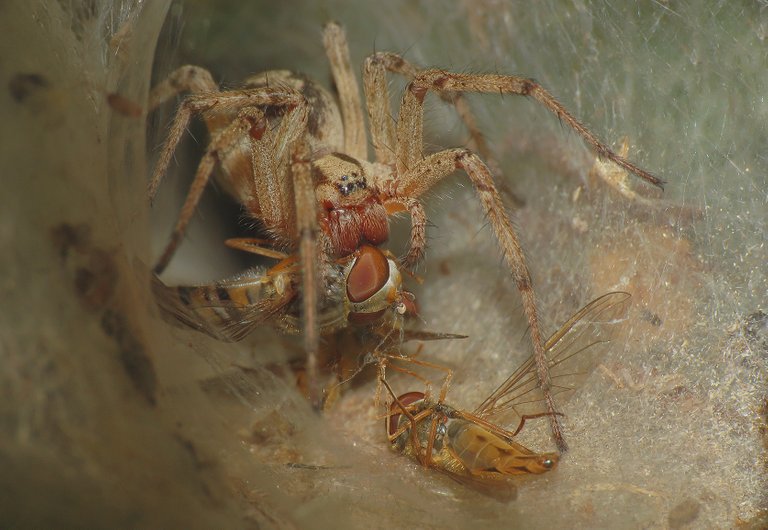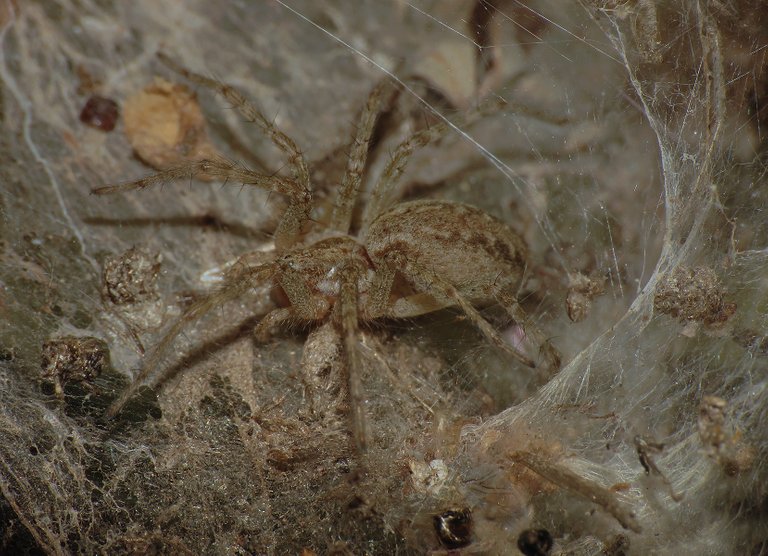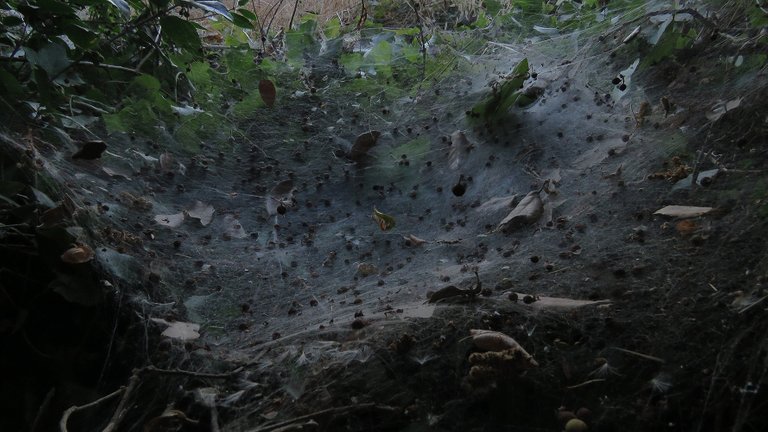Today I spent a couple of evening hours walking up and down one of the many narrow unpaved roads in the area around the village of Shishan, six or seven kilometers from where I live.
In this opening photograph, you can see the main protagonist of this post. A spider. The Agelena orientalis, at the entrance of its silky den, with a syrphid fly in the fangs and two more flies laying on the web. The photograph was taken just before dark when the sun was already somewhere not too deep behind the horizon.
Upon arrival, an hour or so before, I noticed many impressively large horizontal webs spread across the dense vegetation that was bordering the road.
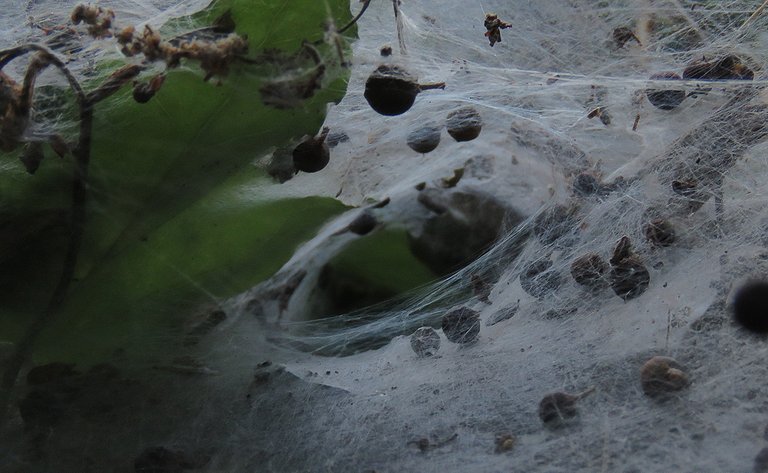
Each one had a hole that led to what looked like a tunnel made of silk.
Everything was quiet along the road and the webs looked abandoned.
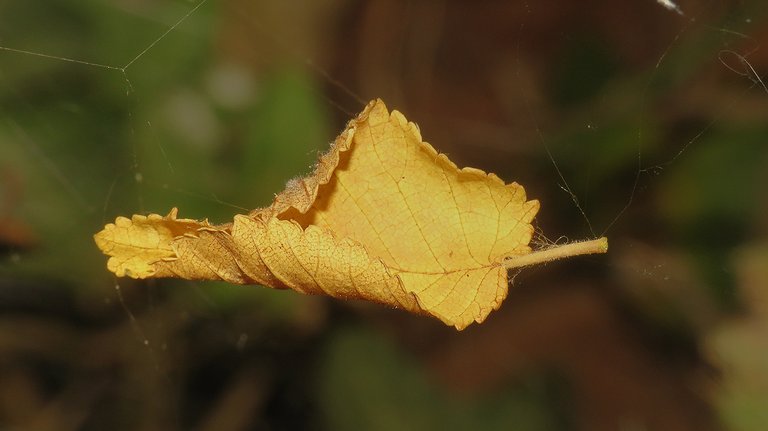
At this point, it seemed that only fallen leaves ...
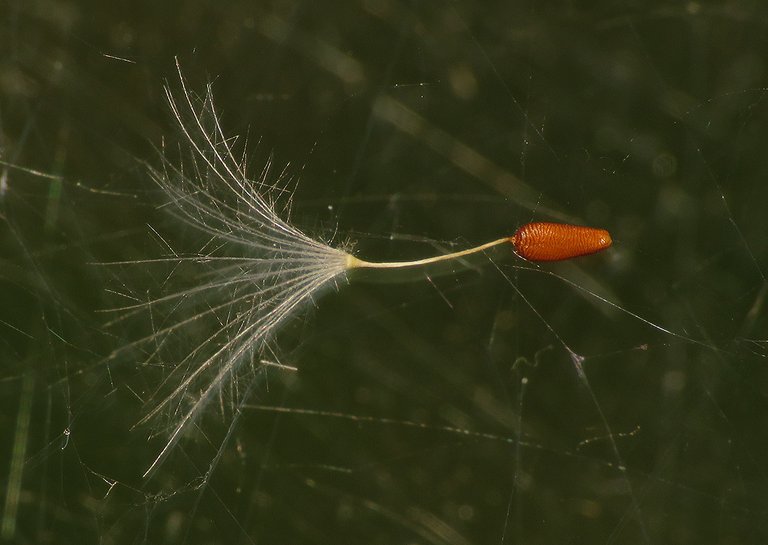
... and parachute seeds recently ended up caught by the threads.
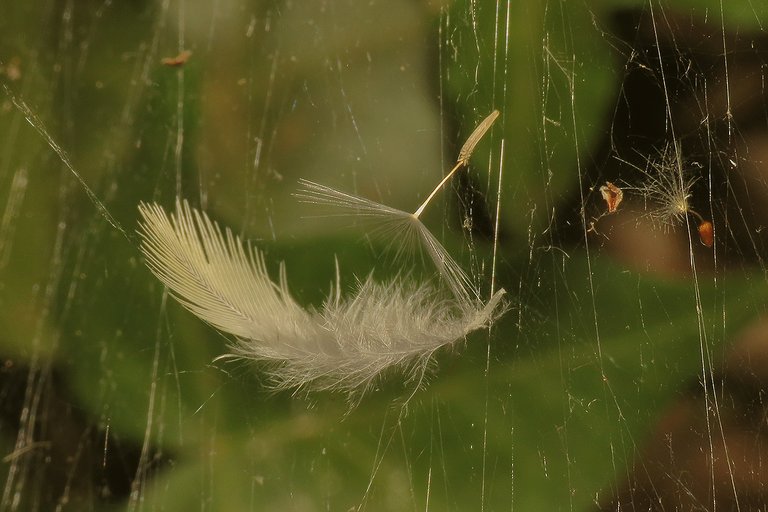
I found one small, fluffy feather as well. The feather and the seed look very good together. Kinda stylish.
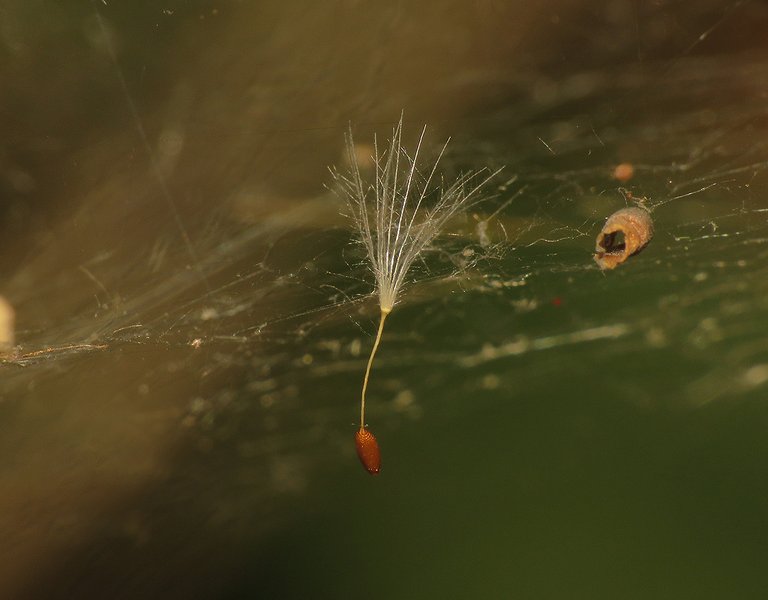
While I was exploring the empty webs and taking these photographs, the light was slowly getting low ...
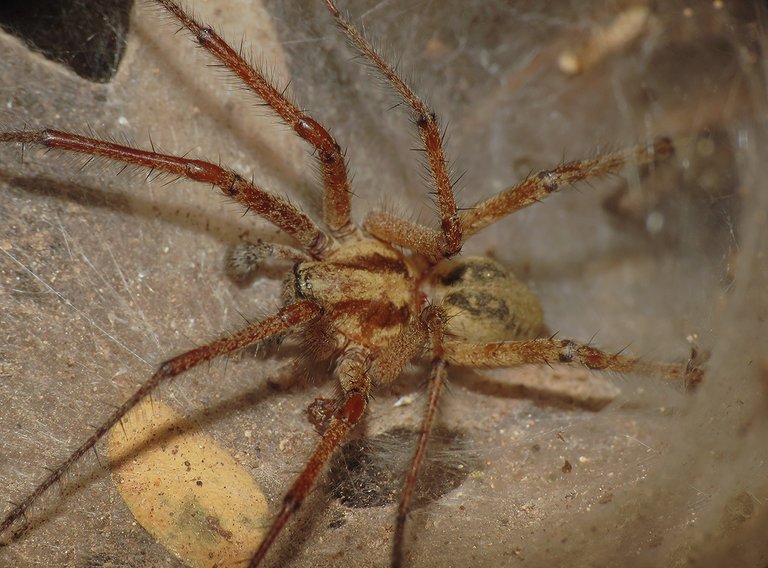
... and the first spiders started to appear at the entrances of their tunnels.
One of them soon caught a fly. The Episyrphus balteatus from the Syrphidae family.
Agelena orientalis is a relatively big spider from the Agelenidae family. Agelenidae are commonly known as Funnel weavers. Their characteristic webs with funnel-shaped retreats are very distinctive and when seen through the macro lens look exactly like webs made by the monster spiders from Fantasy movies and literature.
In this, more up-close shot, you can see a distinctive anatomical feature of this species. The pretty long posterior spinnerets. That look like a short tail.

While exploring the details in the gloomy atmosphere, surrounded by spiders, I photographed also these colorful fruits ...
... of the Arum italicum plant.
At this point, all the spiders were out in the open, so I had plenty to photograph, but there wasn't much time because the night was almost there.
The spiders didn't mind me getting close with the camera, but only on the condition that I don't touch any thread or any leaf or twig connected to the web. And that wasn't an easy task.
The Agelena orientalis has great sensory equipment for hunting in the dark. The elongated hairs on its legs help the spider detect not only prey caught in the web but also the potential food that is near enough to cause vibrations in the web. The large web spread like a sheet on the leaves and twigs isn't sticky but its structure, the way in which the filaments are organized, can easily entangle the prey.
I was able to photograph one more species before the dark. The considerably smaller Allagelena gracilens. A spider that builds the same kind of web. The family is also Agelenidae.
The following links will take you to the sites with more information about the protagonists of this post. I found some stuff about them there.
https://en.wikipedia.org/wiki/Agelena_labyrinthica
https://en.wikipedia.org/wiki/Agelenidae
AND THAT'S IT. AS ALWAYS IN THESE POSTS ON HIVE, THE PHOTOGRAPHS ARE MY WORK - THE END.
